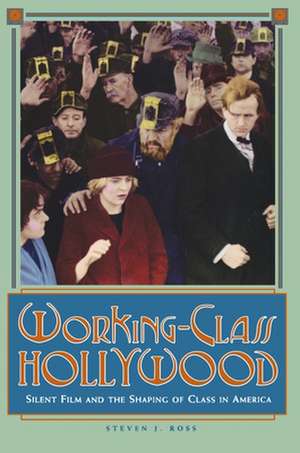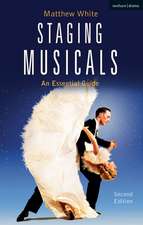Working–Class Hollywood – Silent Film and the Shaping of Class in America
Autor Steven J. Rossen Limba Engleză Paperback – 16 feb 2000
Surveying several hundred movies made by or about working men and women, Ross shows how filmmakers were far more concerned with class conflict during the silent era than at any subsequent time. Directors like Charlie Chaplin, D. W. Griffith, and William de Mille made movies that defended working people and chastised their enemies. Worker filmmakers went a step further and produced movies from A Martyr to His Cause (1911) to The Gastonia Textile Strike (1929) that depicted a unified working class using strikes, unions, and socialism to transform a nation. J. Edgar Hoover considered these class-conscious productions so dangerous that he assigned secret agents to spy on worker filmmakers.
Liberal and radical films declined in the 1920s as an emerging Hollywood studio system, pressured by censors and Wall Street investors, pushed American film in increasingly conservative directions. Appealing to people's dreams of luxury and upward mobility, studios produced lavish fantasy films that shifted popular attention away from the problems of the workplace and toward the pleasures of the new consumer society. While worker filmmakers were trying to heighten class consciousness, Hollywood producers were suggesting that class no longer mattered. Working-Class Hollywood shows how silent films helped shape the modern belief that we are a classless nation.
Preț: 398.93 lei
Nou
Puncte Express: 598
Preț estimativ în valută:
76.35€ • 79.41$ • 63.03£
76.35€ • 79.41$ • 63.03£
Carte tipărită la comandă
Livrare economică 14-28 aprilie
Preluare comenzi: 021 569.72.76
Specificații
ISBN-13: 9780691024646
ISBN-10: 0691024642
Pagini: 392
Ilustrații: 38 halftones
Dimensiuni: 152 x 227 x 26 mm
Greutate: 0.52 kg
Editura: Princeton University Press
Locul publicării:Princeton, United States
ISBN-10: 0691024642
Pagini: 392
Ilustrații: 38 halftones
Dimensiuni: 152 x 227 x 26 mm
Greutate: 0.52 kg
Editura: Princeton University Press
Locul publicării:Princeton, United States















